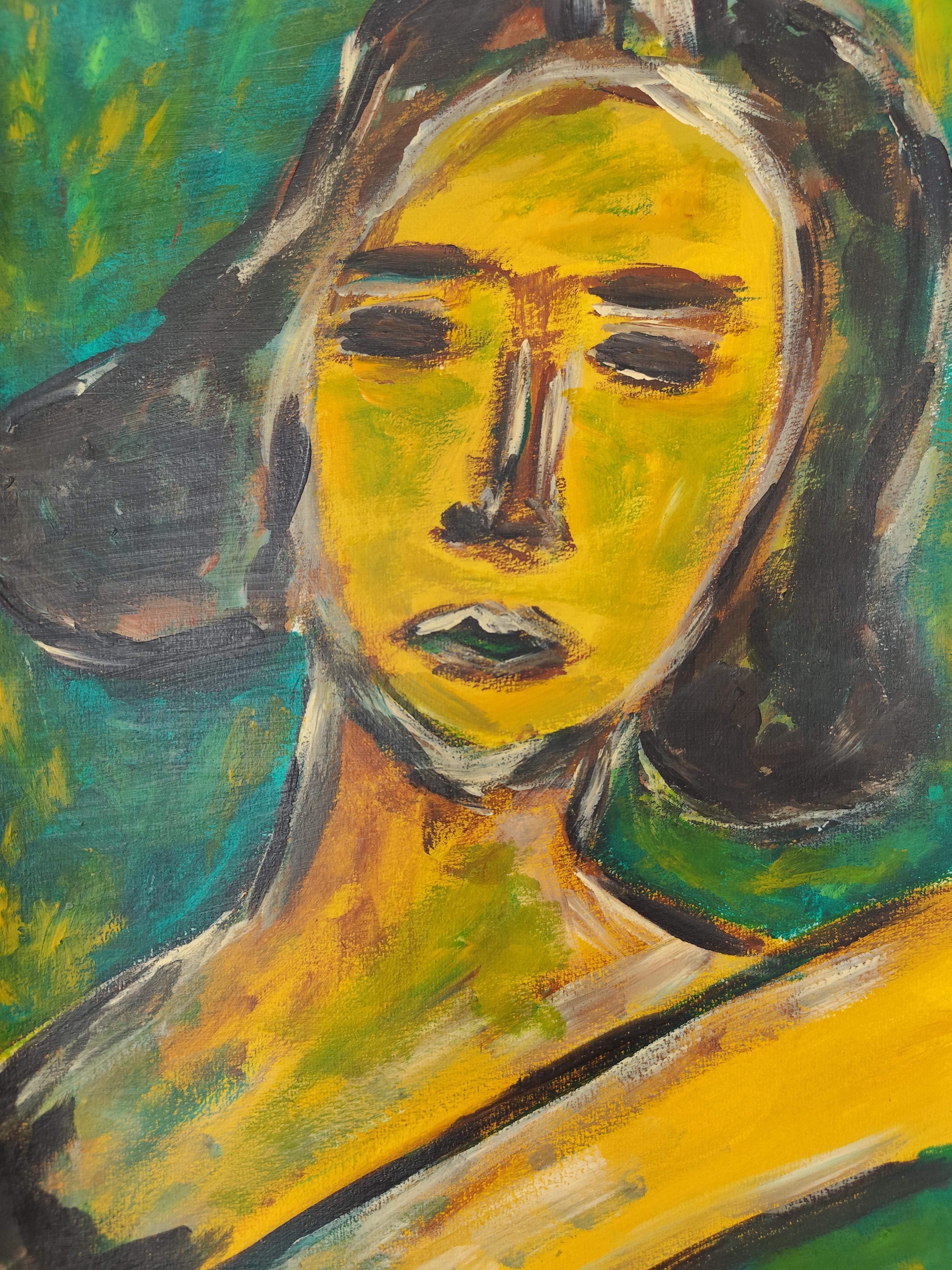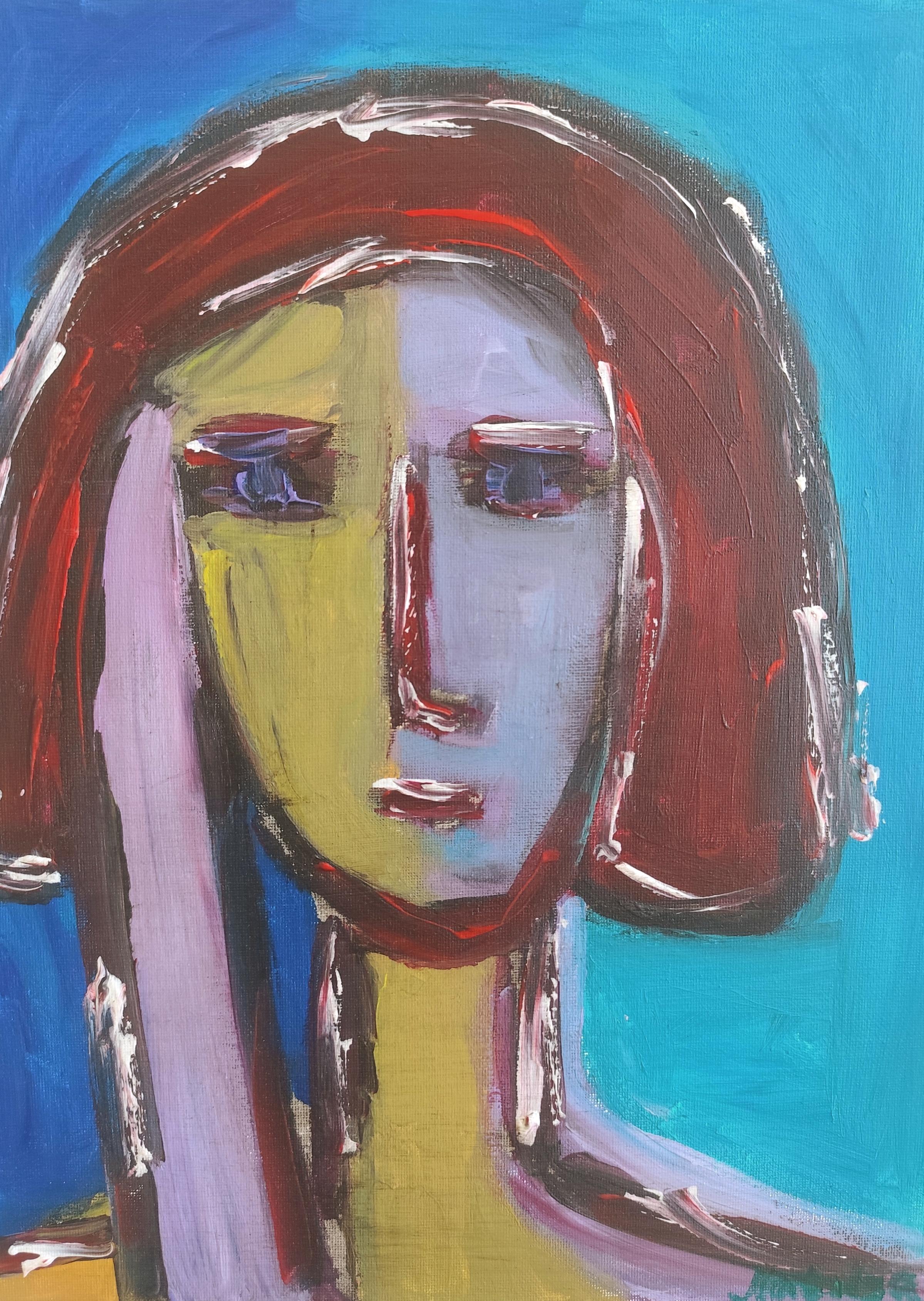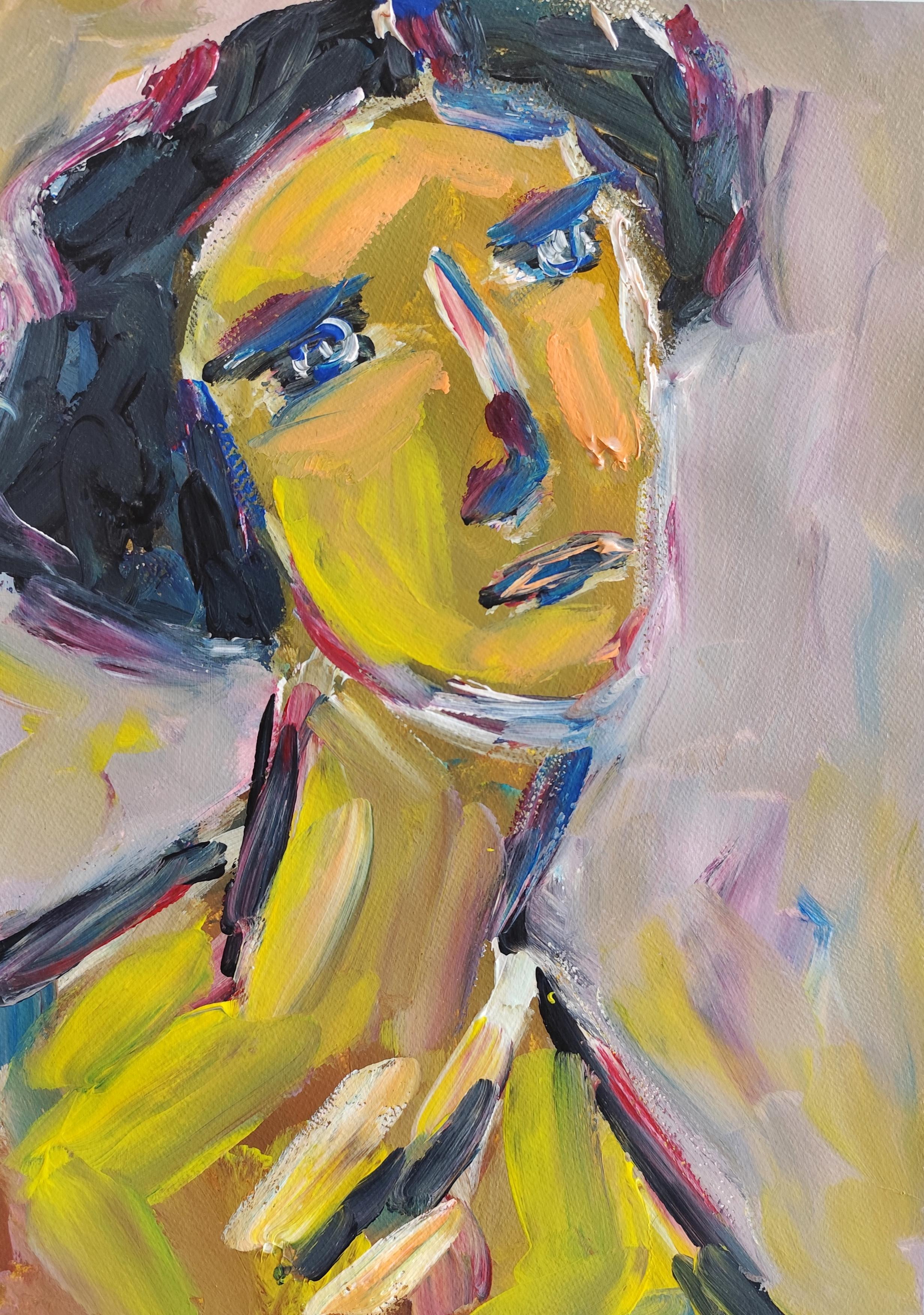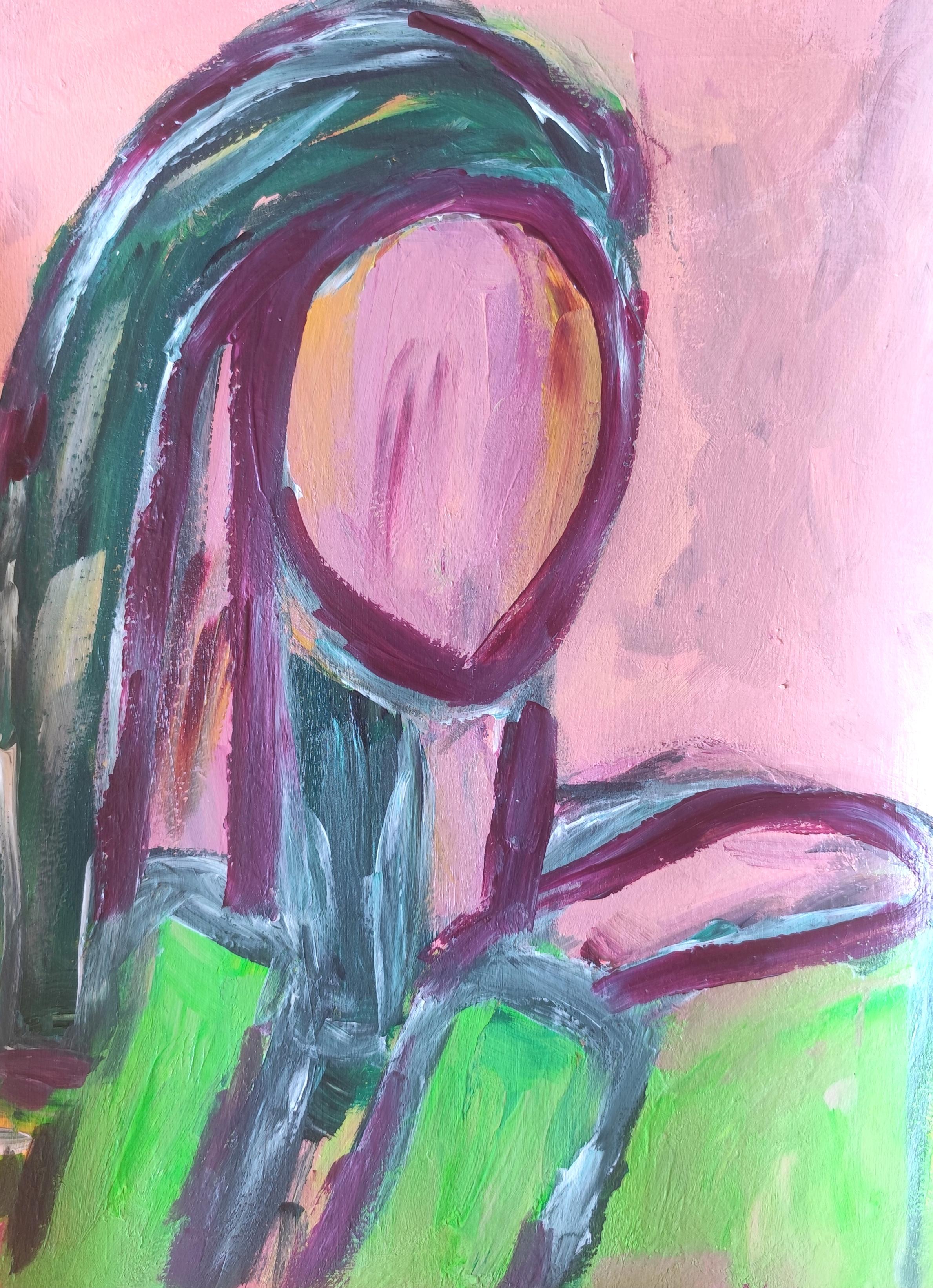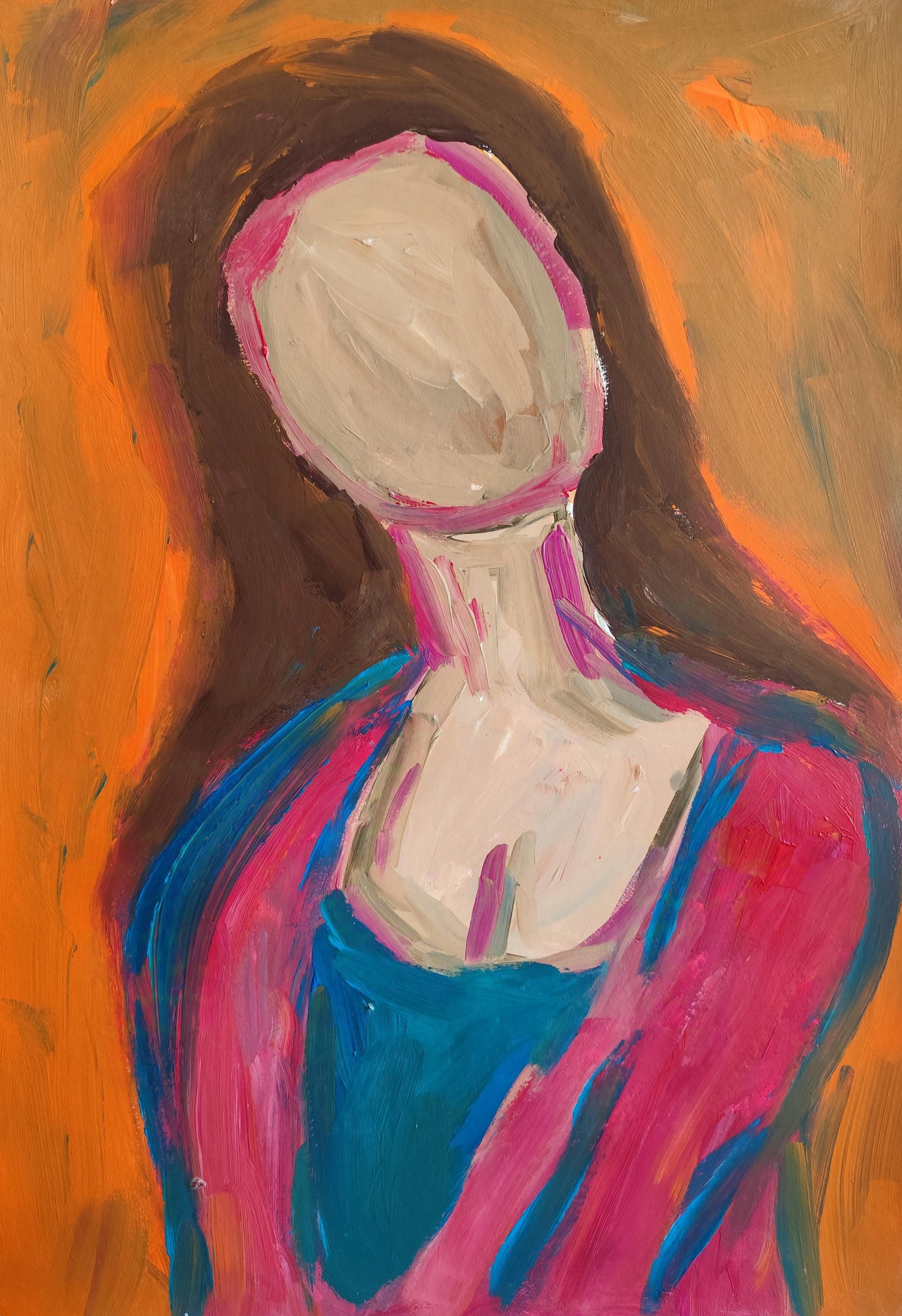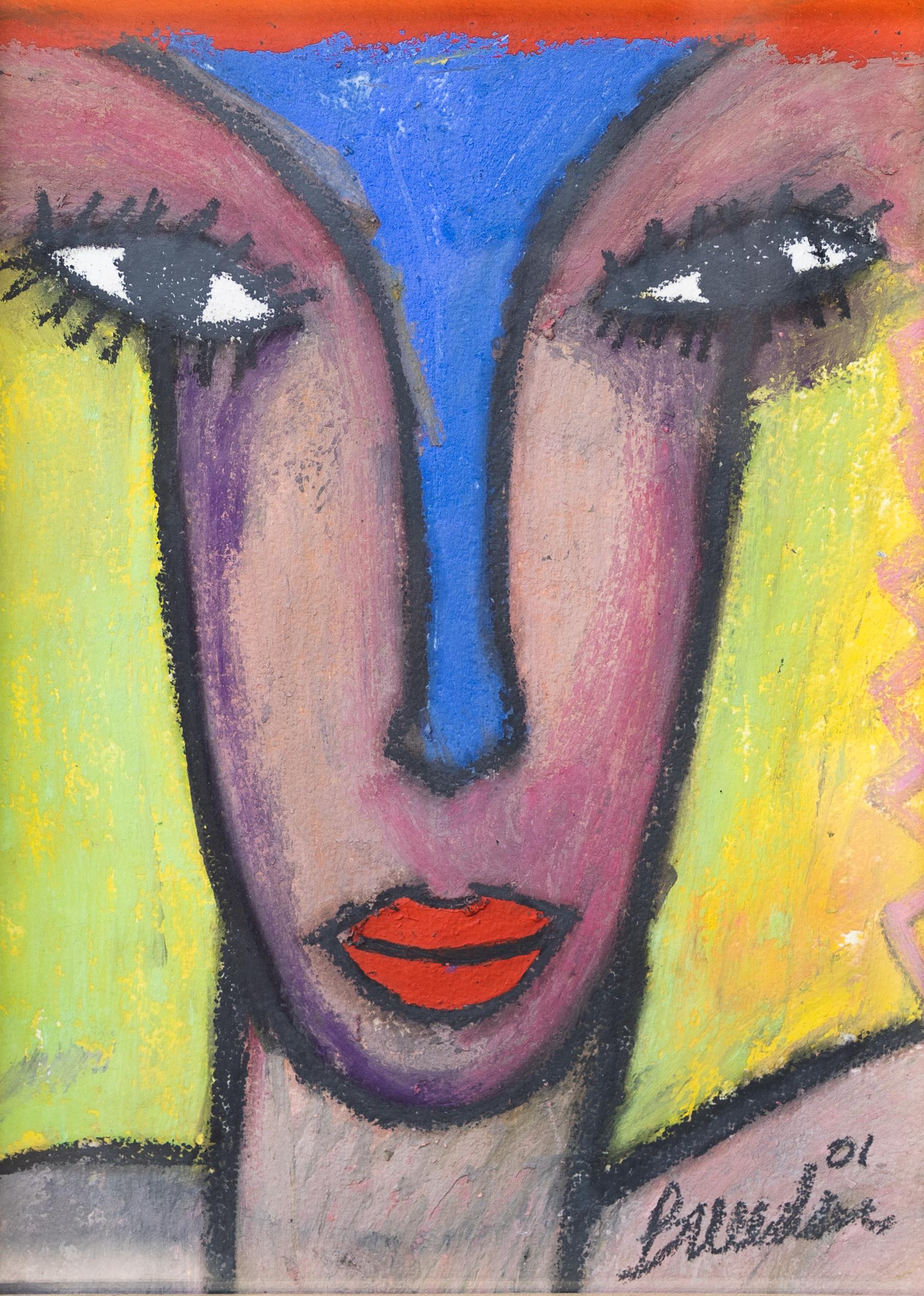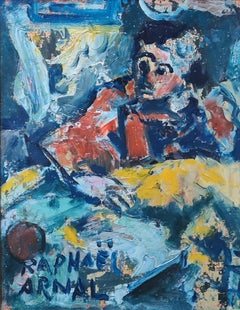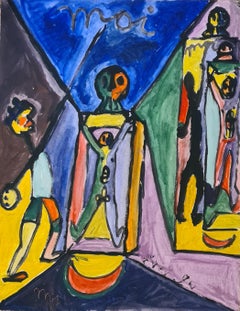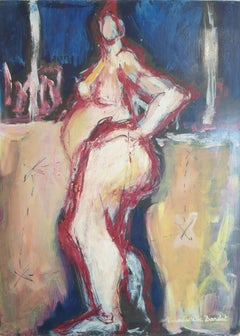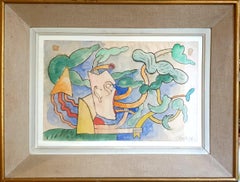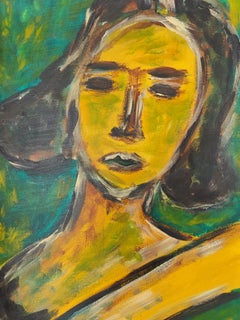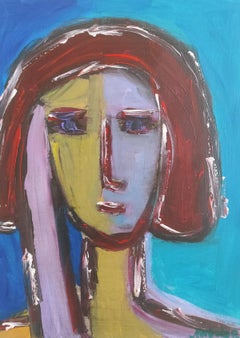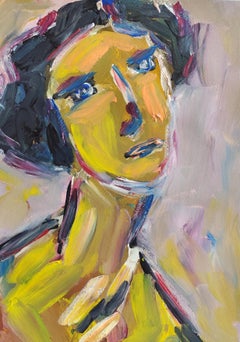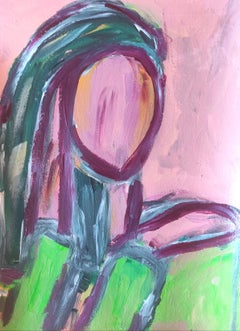Items Similar to Late 20th Century Expressionist Oil and Acrylic on Paper. 'Janine, The Muse'.
Want more images or videos?
Request additional images or videos from the seller
1 of 10
Armand AvrilLate 20th Century Expressionist Oil and Acrylic on Paper. 'Janine, The Muse'.1991
1991
$2,465.51
$3,081.8920% Off
£1,846.48
£2,308.1020% Off
€2,080
€2,60020% Off
CA$3,456.03
CA$4,320.0420% Off
A$3,807.74
A$4,759.6820% Off
CHF 1,971.12
CHF 2,463.9020% Off
MX$45,846.19
MX$57,307.7420% Off
NOK 24,959.12
NOK 31,198.8920% Off
SEK 23,447.51
SEK 29,309.3920% Off
DKK 15,840.42
DKK 19,800.5320% Off
About the Item
A vibrant colourful French portrait of Janine, muse of the artist Armand Avril. Signed and dated mid right. Presented in new contemporary framing under glass.
Armand Avril (1926) is an important French artist, whose distinctive style is influenced by African and Inuit traditions. Avril's works until the late 1960's are characterised by a figurative style of painting, with sensual shapes and outrageously bold colours. Later he created mixed-media artworks, and the influence of Braque, Picasso and Matisse is especially visible in his compositions.
Avril has recently been accorded major retrospectives of his works and his paintings and assemblages are represented in major museums and collections worldwide.
- Creator:Armand Avril (1926, French)
- Creation Year:1991
- Dimensions:Height: 30.5 in (77.47 cm)Width: 24.5 in (62.23 cm)Depth: 1 in (2.54 cm)
- Medium:
- Period:
- Condition:
- Gallery Location:Cotignac, FR
- Reference Number:Seller: LG/Avril/Janine.1stDibs: LU143029019222
About the Seller
5.0
Platinum Seller
Premium sellers with a 4.7+ rating and 24-hour response times
Established in 2000
1stDibs seller since 2020
268 sales on 1stDibs
Typical response time: 1 hour
- ShippingRetrieving quote...Shipping from: Cotignac, France
- Return Policy
Authenticity Guarantee
In the unlikely event there’s an issue with an item’s authenticity, contact us within 1 year for a full refund. DetailsMoney-Back Guarantee
If your item is not as described, is damaged in transit, or does not arrive, contact us within 7 days for a full refund. Details24-Hour Cancellation
You have a 24-hour grace period in which to reconsider your purchase, with no questions asked.Vetted Professional Sellers
Our world-class sellers must adhere to strict standards for service and quality, maintaining the integrity of our listings.Price-Match Guarantee
If you find that a seller listed the same item for a lower price elsewhere, we’ll match it.Trusted Global Delivery
Our best-in-class carrier network provides specialized shipping options worldwide, including custom delivery.More From This Seller
View AllMid Century French Expressionist Oil, La Couseuse
Located in Cotignac, FR
A mid-century French Expressionist oil on paper, laid on board, painting of a lady sewing by Raphael Arnal. The painting is signed bottom left and dated, located and attributed to th...
Category
Mid-20th Century Expressionist Figurative Paintings
Materials
Oil
Late 20th Century French Expressionist Acrylic. 'Moi: Life, Sex and Mortality'.
By Armand Avril
Located in Cotignac, FR
Late 20th century expressionist work on paper by French artist Armand Avril. Signed and dated bottom right.
The painting is full of vibrancy and colour with the depictions and appea...
Category
1990s Expressionist Figurative Paintings
Materials
Oil, Paper, Acrylic
"La Cagole", "The Extrovert", French Abstract Expressionist Oil on Board.
Located in Cotignac, FR
Late 20th century abstract Expressionist oil on board by French artist Emmanuelle Bardet. Signed bottom right and dated 1995 and titled "La Cagole" to the re...
Category
Late 20th Century Nude Paintings
Materials
Board, Oil
'Mother Nature', Lyrical Surrealist Abstract Watercolour on Paper.
Located in Cotignac, FR
Mid-century lyrical surrealist abstract watercolour on paper by French artist Jean Clerté, signed and dated bottom right. Presented in mid-century frame.
Jean Clerté , born in 1930 in Saint-Savin-sur-Gartempe in Vienne, is a French painter, engraver, draftsman, watercolourist and sculptor . This work is a great example of his more humorous and expressive work influenced by Alechinsky from the late 1960s onwards. There is a light playfulness and yet the watercolours are more vivid than his previous palette.
Jean Clerté works in series. His sequential narrations testify both to a youthful spontaneity and to a perfect mastery in the distribution of forms and images on the painted surface. The narration is not only an accumulation of juxtaposed fragments and symbols, it forms a whole, it takes on and gives meaning. In general, we can say of Clerté that he practices an “eco-art” that feeds on primary hungers: the feeling of being united with nature, the vegetable, the mineral, the aquatic. In his colourful canvases, his inks, his boxes, his objects, like a shaman on the path of his dreams, the painter Clerté mounts an assault on beasts and demons, elves and gnomes. From the Poitevin marshes to the tropical forests emerges a fauna caught in the meanders of a design that marvels at the appearance of these grotesque idols.
Jean Clerté began to draw and paint at a very young age, and at the age of 15 he enrolled at the École des Beaux-Arts in Poitiers. Then in 1949, curious about the capital, he moved to Paris. Having very few financial resources, he could not continue his studies at first, worked as a model to survive, and met other artists; he was then admitted to the studio of Ossip Zadkine and, from 1952, he was also able to study engraving at Atelier 17 of Stanley William Hayter, an English engraver and printer living in Paris associated in the 1930s with surrealism.
At the end of the 1960s, he worked alongside Pierre Alechinsky, founding member of the Cobra movement, engraving Alechinsky's originals, benefiting from his advice, and discovering acrylic as a medium.
From 1976, Jean Clerté became associate professor at Hayter. Clerté had taught previously, in 1971 at the Salzburg Summer University and in 1972 he gave courses at the Paris-Sorbonne University . In 1981, he was appointed professor at the School of Decorative Arts , where he had Maïlys Seydoux-Dumas as a student and, from 1983 to 1988, he was Alechinsky's assistant professor at the Paris School of Fine Arts.
His first works are part of the current of lyrical abstraction, and are nourished by impressions of nature (landscape motifs, e.g. forest fires, waterscapes), then around 1968, encouraged by Alechinsky, he rejects abstraction, and his work becomes more figurative with expressive and humorous elements. From this period his colours are more subdued, often with pastel tones, he works on series. Jean Clerté has created a world in a space where drawing, painting, objects participate in a playful figuration. From his drawings were born sculptures and sometimes mobiles (Le Moulin à dessin). If it is the artist who makes astonishing, polychrome, whimsical “toys”, it is the painter who appeals to adults through his caustic and satirical humour.
His first exhibitions in France took place at the Galerie Massol , then at the Galerie Pascal...
Category
Mid-20th Century Expressionist Figurative Drawings and Watercolors
Materials
Paper, Watercolor
$782 Sale Price
44% Off
Abstract Expressionist Acrylic and Oil on Paper
Located in Cotignac, FR
Abstract Expressionist oil and acrylic on paper by Dutch artist Joep Goeting. Signed and dated 1972 to the bottom left and presented under glass in a gilt wooden frame.
An early and...
Category
Late 20th Century Neo-Expressionist Abstract Paintings
Materials
Paper, Oil, Acrylic
Expressionist Female Nude Portrait, 'The Green Curtain' Oil on Canvas.
Located in Cotignac, FR
Expressionist female nude portrait by noted Scottish artist Douglas Thomson. The painting is signed bottom left and signed and titled to the back of the canvas. There is an original exhibition title and price label to the frame. Presented in original plain wood frame.
A colourful and striking portrait of a female nude. Her rich red hair falling over her shoulders, her pose calm as she stares out from the canvas in a wistful way, her mouth set. Thomson has created flesh tones, wonderful contrast of colours between the sitter and the background curtain and wall and a texture to the canvas to create added interest. A really interesting and engaging portrait.
Douglas Thomson was born in Greenock in 1955 and after studying at the Glasgow School of Art 1974...
Category
Late 20th Century Portrait Paintings
Materials
Oil, Canvas
$2,086 Sale Price
20% Off
You May Also Like
Abstract expressionist woman's portrait acrylic on paper "Serenity of the woman"
Located in VÉNISSIEUX, FR
This contemporary abstract expressionist woman’s portrait "Serenity of the Woman" was created by French artist Natalya Mougenot as part of her ongoing series dedicated to Women. Thro...
Category
2010s Abstract Expressionist Portrait Paintings
Materials
Paper, Acrylic
$331 Sale Price
20% Off
Free Shipping
Contemporary Expressionist portrait woman acrylic on canvas "Silent Power"
Located in VÉNISSIEUX, FR
"Silent Power" is a contemporary expressionist portrait by French artist Natalya Mougenot, infused with elements of Fauvism, Expressionism, Cubism, and Modern Naïve Art. It forms par...
Category
2010s Expressionist Portrait Paintings
Materials
Canvas, Acrylic
$331 Sale Price
20% Off
Free Shipping
Modern Abstract Expressionist woman's portrait acrylic on paper " True self"
Located in VÉNISSIEUX, FR
This contemporary abstract expressionist portrait of a woman was created by French artist Natalya Mougenot. Bold, vivid, and emotionally charged, the piece—titled "True Self"—explore...
Category
2010s Abstract Expressionist Portrait Paintings
Materials
Acrylic, Paper
Abstract expressionist woman's portrait acrylic on paper "Silent power"
Located in VÉNISSIEUX, FR
This contemporary abstract expressionist woman's portrait was created by the French artist Natalya Mougenot. With flowing long hair and no facial details, the figure is rendered in a...
Category
2010s Abstract Expressionist Portrait Paintings
Materials
Paper, Acrylic
Contemporary figurative art abstract woman's portrait acrylic painting on paper
Located in VÉNISSIEUX, FR
This artwork " Woman in a dreamy mood" showcases a bold and abstract portrayal of a figure, characterized by the absence of facial features, allowing viewers to focus on the form an...
Category
2010s Contemporary Abstract Paintings
Materials
Paper, Acrylic
Portrait of a Woman - Expressionist Mixed Media Piece
Located in Austin, TX
Expressionist portrait of a woman by Juan Carlos Breceda featuring purple, blue, green, yellow, and orange. Executed in 2001. Mixed Media.
Framed ...
Category
21st Century and Contemporary Expressionist Portrait Paintings
Materials
Mixed Media
